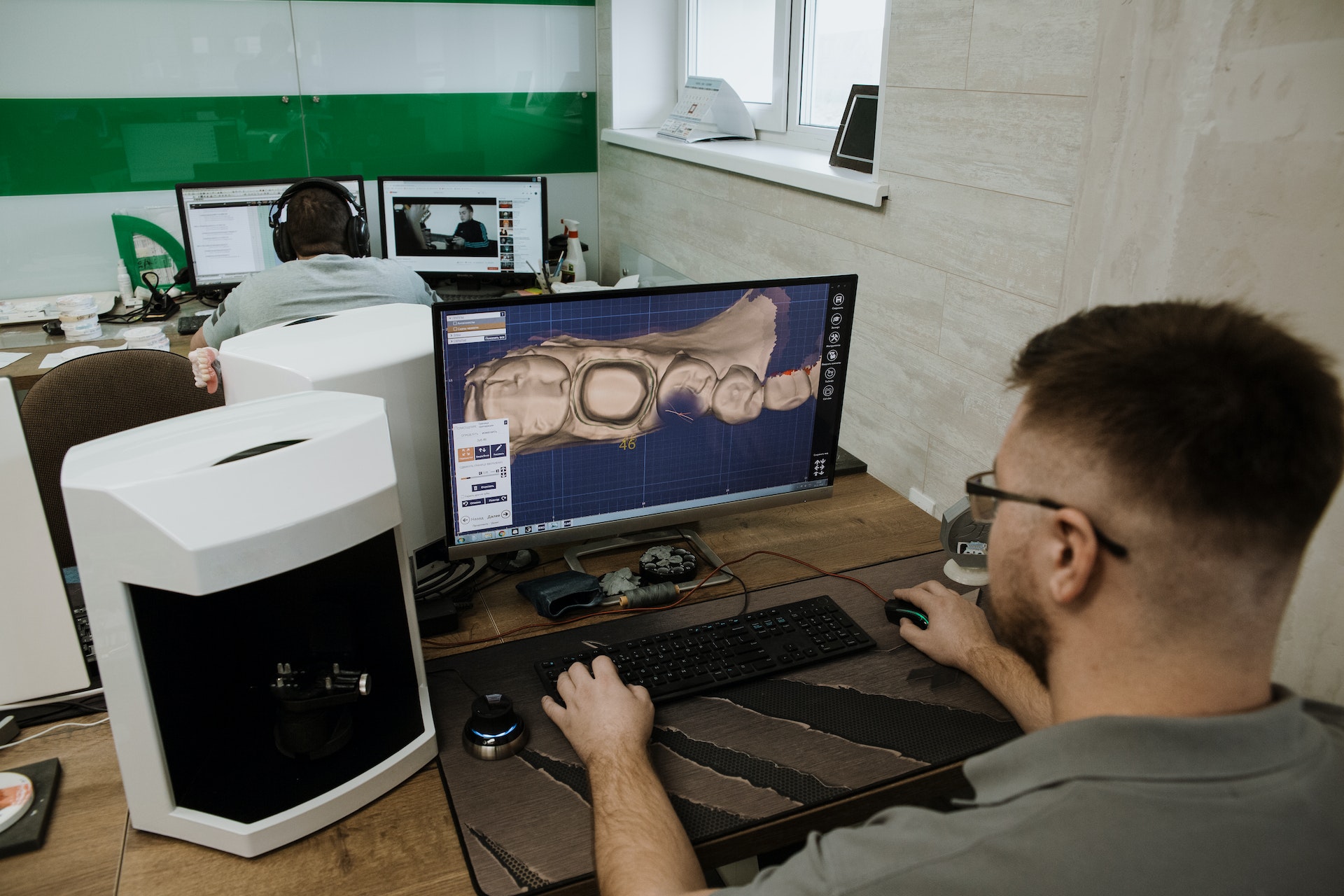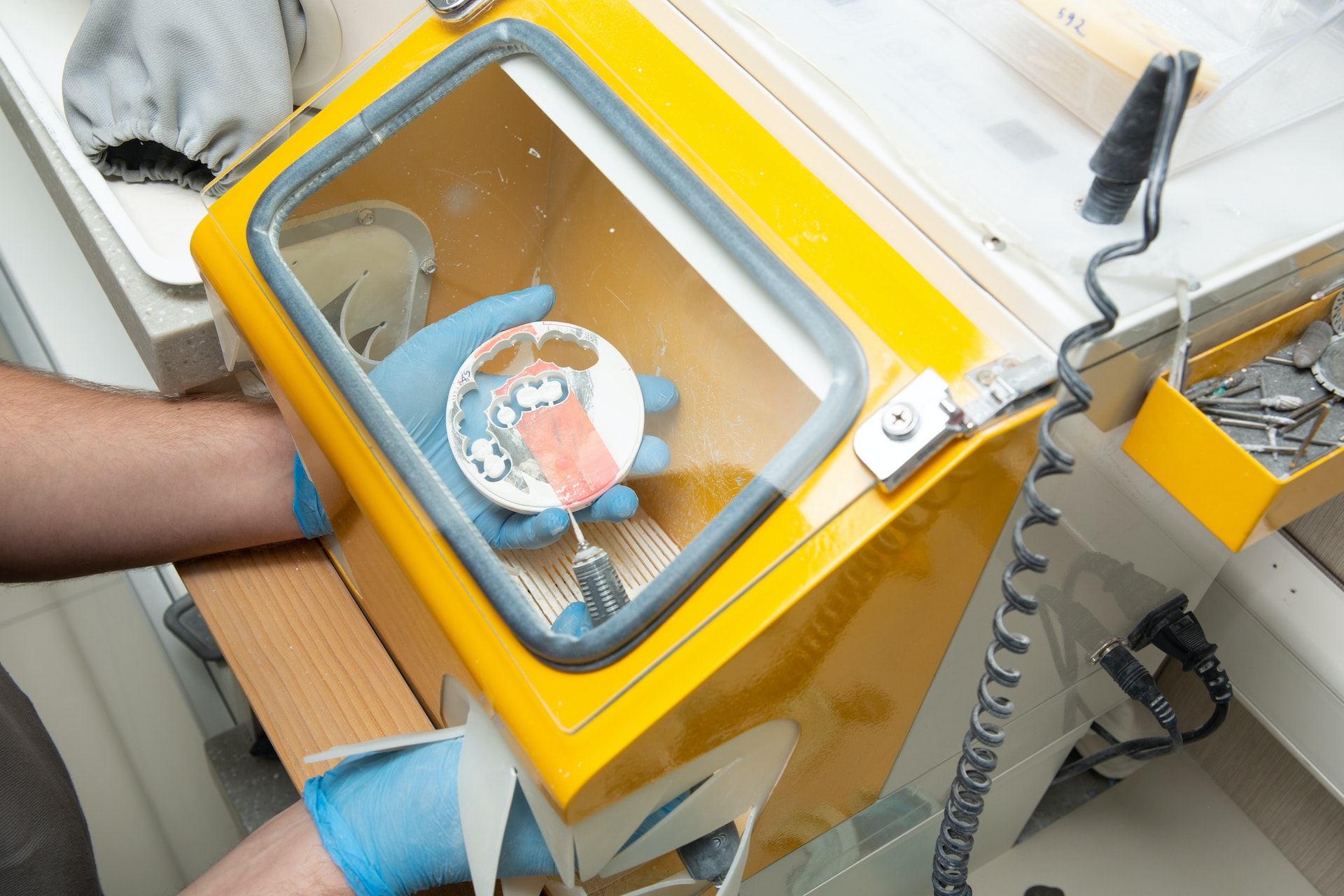Dental implant procedure step by step
Dental implant procedure step by step, expect this!
Missing teeth can cause many unpleasant moments, which is why it is worth getting a dental implant done as soon as possible. At a job interview, on a date or even in a family photo, a firm and brave smile looks better than trying to hide missing teeth.
If you've decided that you want a full set of teeth again, you've probably already wondered what happens in this case. In our article, we present the implantation step by step, so there should be no surprises even in the dental chair.

It is important to plan the placement of the dental implant
1. Preparations before the procedure
In order to receive the appropriate treatment, your condition must be assessed with the help of our specialists, as well as with imaging procedures. Let's see the steps of this!
Assessment of your condition
Before starting the implantation process, a comprehensive dental examination is essential. Our dentist will then review your medical history, including your current medical condition, medications you are taking, and existing allergies. This way you can be sure of your suitability for the procedure. It is important to point out that someone can be allergic not only to medicines, but also to latex-based medical rubber gloves.
Image diagnostics
During the assessment, in addition to the Orthopantomogram, it is important to have a CT scan taken as well, on which we can see much more information than on the X-ray image itself. The specialist also needs to assess the condition of the teeth, the area to be implanted, and the bone structure. Digital impressions play a key role in the planning phase of dental implants, so there is a very high probability that no complications will occur during the procedure.
But why is a bone structure assessment needed?
When you lose a tooth, you naturally don't use the missing tooth area for chewing, so the bone itself can slowly recede or even completely atrophy. However, during the implantation of a dental implant, a solid foundation is needed in the jaw in order to perform its function properly. In the case of recent tooth loss, bone replacement is not required in most situations, but if it has been years since this happened, then the probability that it will be needed is increasing. Various imaging procedures will help to determine this. Based on X-rays and CBCT scans, we can assess the bone density in the area of the dental implant. This information helps determine whether additional procedures are needed to successfully place the implant.
Assessment of your gum condition
If you already have the solid foundations regarding the bone stock, then the gum examination follows. Healthy gums provide the necessary support and cover for the dental implant, and also prevent food particles from getting between the gums and the new tooth. Our dentist therefore thoroughly examines the condition of your gums, looking for signs of possible gum disease or inflammation, which can negatively affect the successful placement of implants and the subsequent healing process.

The first step before planning the implantation is the assessment of your condition
2. Treatment plan
Before implantation, we prepare a unique and personalized treatment plan for each of our patients, since everyone has different needs, characteristics, condition, and previous medical history, so we plan the procedure accordingly. One of the key factors in creating a treatment plan is the number of missing teeth.
These decisively influence the scope and complexity of the implantation procedure, as well as the type and number of crowns that will be needed at the end of the process. In addition, we take into account your personal preferences during planning, as it is important to us that the treatment plan is in line with your expectations and goals. This includes discussing the implant materials and the entire treatment schedule.
WITH MODERN TECHNOLOGIES FOR MODERN MEDICINE
Modern 3D imaging technologies play an important role in design processes. Examples include CBCT images (Cone Beam Computed Tomography), which provide an extremely detailed and accurate picture of the patient's oral cavity structure. CBCT images can be used to create a three-dimensional model of the jawbone, teeth and surrounding tissues, providing a clear view of the anatomy, supporting accurate planning.
Computer aided design (CAD) software can be used to create a virtual model of the patient's mouth. This allows our dentist to simulate different implant placement scenarios, so that he can find the best solution for you.
In addition, the use of 3D imaging and CAD ensures that the bone density, the position of the neighboring teeth up to the roots, and the angle and position of the implant can be seen for the implantation of the tooth implant. In this way, the strategic placement of implants can be optimized for stability, function and aesthetics.

There is no need to be afraid during the procedure, our specialist has a lot of experience
3. Dental implant - the procedure itself
The surgical implantation of a dental implant is a carefully planned and professionally performed procedure that includes several steps to achieve optimal results. Before the operation, the given area is always anesthetized so that the intervention involves as little pain or discomfort as possible.
WHAT HAPPENS TO THE GUM?
After the anesthetic has taken effect, in the next step, our oral surgeon makes a smaller incision in the gums. During the implantation of the dental implant, the specialist must have access to the bone tissue in order to be able to implant the titanium dental implant. After making the incision, the implantologist carefully exposes the jawbone beneath the soft tissue to prepare the area for the implant.
THIS HAPPENS TO BONE
Our dentist uses special dental tools to make a smaller hole or socket in the jawbone corresponding to the size of the dental implant. This is where the implant itself goes, which actually replaces the missing tooth root. This small screw is made of titanium, which is a medical metal and is not expelled by the body in most cases. Even when discussing the treatment plan, you can choose from different brands of titanium screws (Dentium, Nobel Biocare).
In order for the titanium dental implant to be inserted accurately and professionally, our oral surgeon uses special tools and techniques. In this way, the implant can be placed at the right depth and angle to prevent it from loosening and to provide the necessary bite force.
That is why it is a very important step before implantation to check the bone stock and replace it as necessary, since achieving initial stability is key to the success of the implant. The bone must therefore hold the dental implant securely and permanently in place.
Period of healing
Once the implant is safely placed, the dentist carefully closes the incision in the gum tissue. This is done with surgical sutures, so the wound can heal as soon as possible without serious contamination. This completes the implantation process and begins the healing period of the implant, which can last up to 2-3 months.
The biocompatible nature of the dental implant facilitates a process in which the bone fuses with the surface of the implant over time. In this way, it will almost be as if it were a natural part of your bone - in the same way as the original tooth root. The duration of osseointegration can vary, but the process typically takes several weeks. During this time, however, the dental implant becomes a stable part of the jawbone.
Implantation of a tooth implant is a complex but effective procedure, which enables you to have a long-term tooth replacement. Meticulous planning and professional execution ensure successful results, so you can regain your smile, your confidence and your ability to chew.

The crown is the last step in the preparation of the dental implant
4. Post-treatment
After implanting a dental implant, proper aftercare and control are extremely important. You will receive detailed instructions for the days after surgery, which will help you manage discomfort, swelling or possible minor bleeding. These guidelines will help you get through the period after implant placement as comfortably and smoothly as possible.
In addition to the above, it is also worth monitoring the healing process. That is why the regular control provided by us is necessary, which helps to monitor how the condition develops after the intervention. These relatively frequent follow-up examinations allow our dentists to detect and treat any complications, and to ensure that the implants are properly healed and embedded in the jawbone.
Summary
The article presents a step-by-step procedure for implanting a tooth implant. As a first step, preparations include a thorough dental examination of the patient, including health and allergy checks, as well as X-rays and CT scans. These tests and imaging procedures help determine whether you are a good candidate for an implant.
The next important step is to assess the bone structure. Since the dental implant must provide a stable base, if necessary, the missing bone quantity and density can be filled with bone replacement. We also assess the condition of the gums in order to ensure that the new tooth provides adequate support after implantation.
If we have all the examinations, we will prepare an individual treatment plan for you, taking into account the number of missing teeth and individual needs. Then, modern technologies (such as 3D imaging and computer-aided design) help with the planning, so that the dentist can place the implant as precisely as possible.
The procedure requires surgical intervention, so we will provide you with anesthesia to make the implantation as comfortable and painless as possible. As soon as the anesthetic has taken effect, our dentist can access the bone tissue through the gums and then insert the implant.
Since this is a pre-planned and modeled process, theoretically no complications can occur. If it does, our expert doctors can treat it immediately. After the intervention, there is follow-up treatment and regular check-ups to ensure smooth recovery. If you need an implant, contact us, 360 Dental!
2023-10-01


